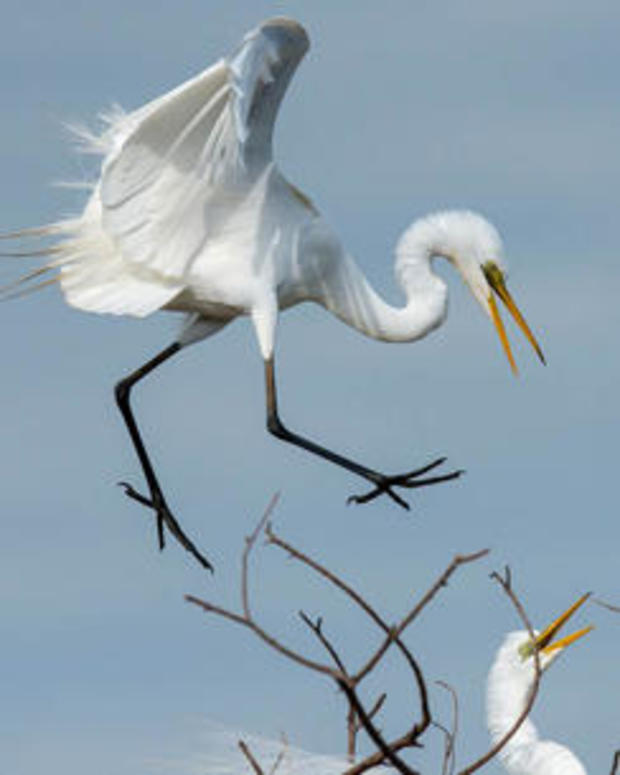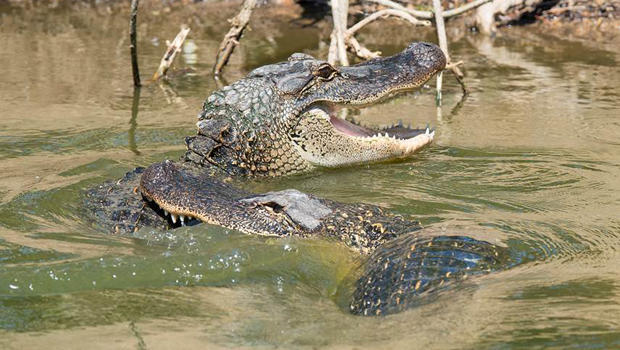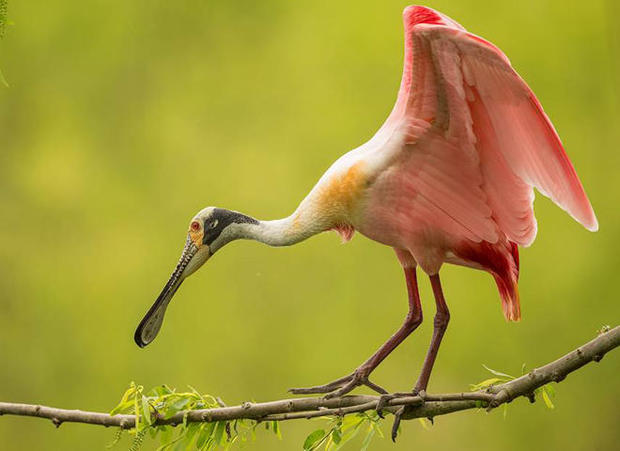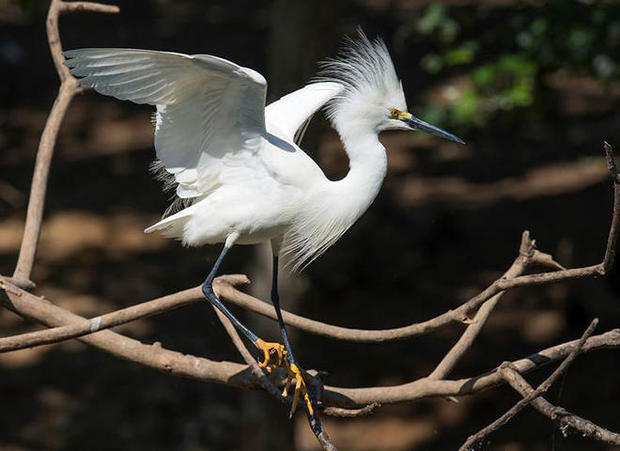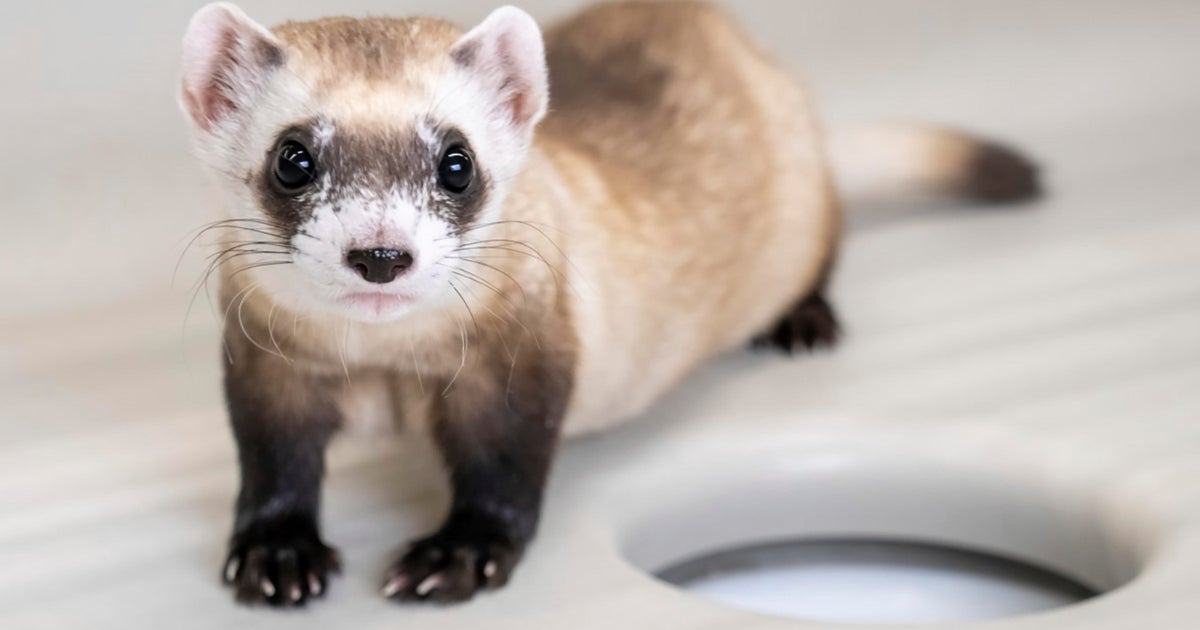Nature up close: Merritt Island
By "Sunday Morning" contributing videographer Judy Lehmberg.
Merritt Island on the east coast of Florida is a study in contrasts.
When the last glaciers retreated 7,000 years ago, sea levels rose, forming marshes, lagoons, and Merritt Island. The first inhabitants were the early Indian people, or Paleo-Indians. Spanish explorers ultimately led to Spanish settlements along the Florida east coast (including St. Augustine - considered the oldest continuously-inhabited European settlement in the U.S - in 1565). Rich in wildlife, the area was used as a hunting-and-gathering ground by early inhabitants.
In 1962, the federal government acquired more than 140,000 acres north of land they already owned at Cape Canaveral for the expanding space program. NASA built the John F. Kennedy Space Center on part of the newly-acquired land, but most of the acreage went unused. In 1963 the U.S. Fish and Wildlife Service signed an agreement to manage the unused land as a national wildlife refuge.
The contrasts lie in this wildlife haven being in the shadow of the space center's technological marvels, the monster rockets, the space shuttles, and realizing Kennedy's dream of landing people on the moon.
Our national wildlife refuges' goals are conservation and wildlife management. Specific goals for this island refuge are to protect and provide habitat for endangered species and migratory birds, and to provide enough habitat for the naturally high species diversity of the area. The Indian River Lagoon on the west side of the island has more than 2,000 species of plants and 2,000 species of animals, making it North America's most diverse estuary. They also provide for human use, allowing managed fishing, hunting and non-consumptive recreation, including wildlife observation and photography. Merritt Island is truly an example of how nature and technology can coexist.
Although the island is rich in species diversity, it is the birds that really stand out. One of the least common but most entertaining Merritt Island birds is the reddish egret. Their unique hunting technique involves forming a canopy with their outspread wings while running in a zigzag pattern through shallow water. Biologists have discussed the purpose of their canopied wings; some say it is to reduce the glare on the water so they can see fish better. Others believe the canopy creates a shadow where fish feel protected. Maybe both ideas are correct. No matter the purpose, it is really fun to watch them running around like drunken sailors.
Reddish egrets are not as common as some other egrets and herons, and are considered threatened in part of their range. They, like many other coastal birds, are threatened by habitat loss and sea level rise as a result of climate change.
One of the more common Merritt Island inhabitants is the American alligator. Alligators have been on Earth for at least 200 million years, surviving the mass extinction that killed out the dinosaurs, only to have their population decimated recently by over-hunting.
The American alligator is one of the few formerly-endangered animal success stories. For many years alligators were hunted for meat and for their hide to make shoes, bags and belts. By the 1950s and '60s they had become quite rare in their former marsh habitat from the Carolinas to Florida and west to Texas. They were one of the first animals to be listed by the U.S. federal government as endangered when it became illegal to hunt them in 1967, six years before the Endangered Species Act became law. They rebounded faster than anyone expected and were removed from the list in 1987. Some research points to the introduction of South American nutria, which alligators eat, as one of the key reasons for their rapid increase.
Alligators are a keystone species in wetlands because they provide habitat for other animals when they create "gator holes." They use their claws, mouth and tail to wallow out depressions that fill with water. These alligator hotels provide vital water for fish, turtles and other wetland animals, especially during dry spells.
For herons and egrets, alligators are a double-edged sword. When bird rookeries are on islands alligators provide protection to nesting birds because they deter raccoons and other egg and chick predators from reaching the rookery. At the same time, they will eat any egg or chick that falls out of a nest, and even occasionally grab an unwary adult bird as it feeds or wades in the water looking for nesting material.
Roseate spoonbills are also residents of Merritt Island. The bright pink of their feathers is a result of carotenoids they get from the crustaceans they eat. Their improbable bill shape aids them in capturing prey as they swish it through shallow, silty water where crustaceans may hide.
Snowy egrets have evolved a particularly interesting adaptation for hunting small fish. They have distinctive yellow feet. They will stand in shallow water and wiggle their yellow toes to attract fish, which may think they found something wormy to eat, but instead get eaten.
Another way the snowy egret uses its yellow toes is to fly over shallow water dragging their feet, which may flush little fish, which the egret then grabs in flight.
As an observer views the various herons and egrets while they fish, distinctive hunting patterns of each species emerge. Some species like to hunt in deeper water; some swish their bills through the water to capture prey by feel; and others stealthily ambush their food. Each has evolved to occupy a slightly different ecological niche in the diverse marsh ecosystem of Merritt Island.
Judy Lehmberg is a former college biology teacher who now shoots nature videos.
For more info:
- Judy Lehmberg (Official site)
- Judy Lehmberg's YouTube Channel
To watch extended "Sunday Morning" Nature videos click here!
